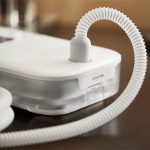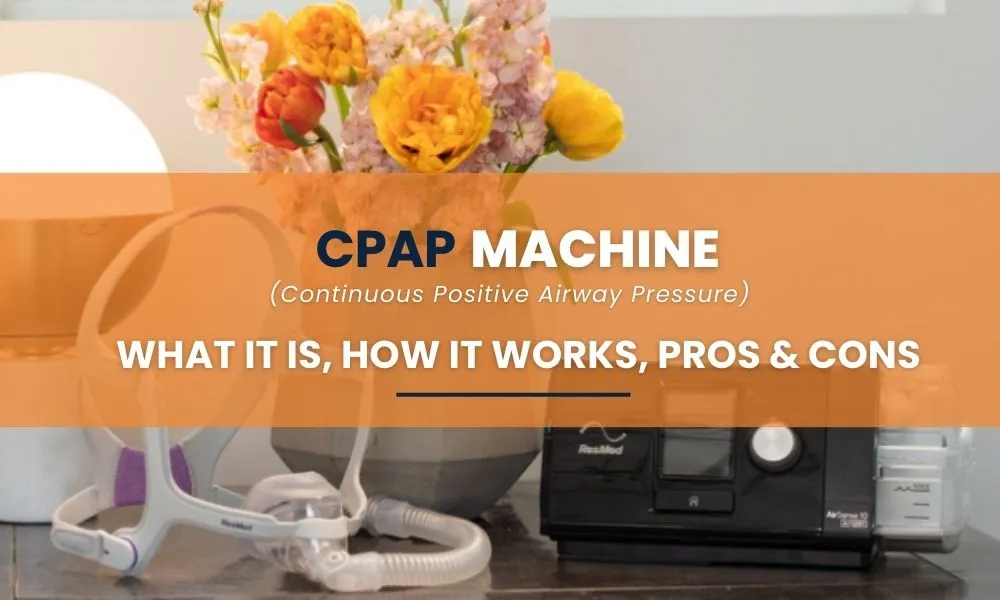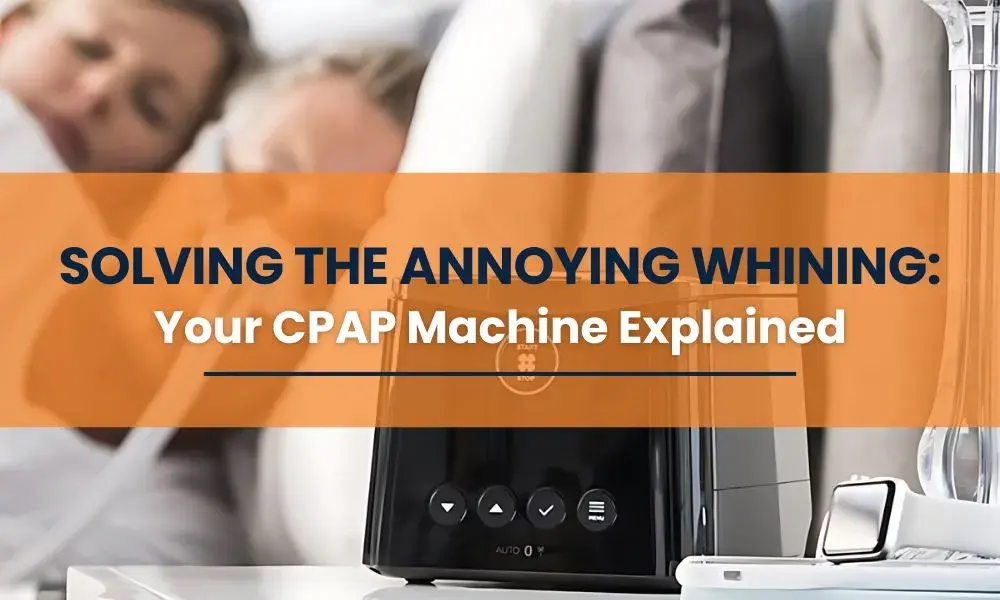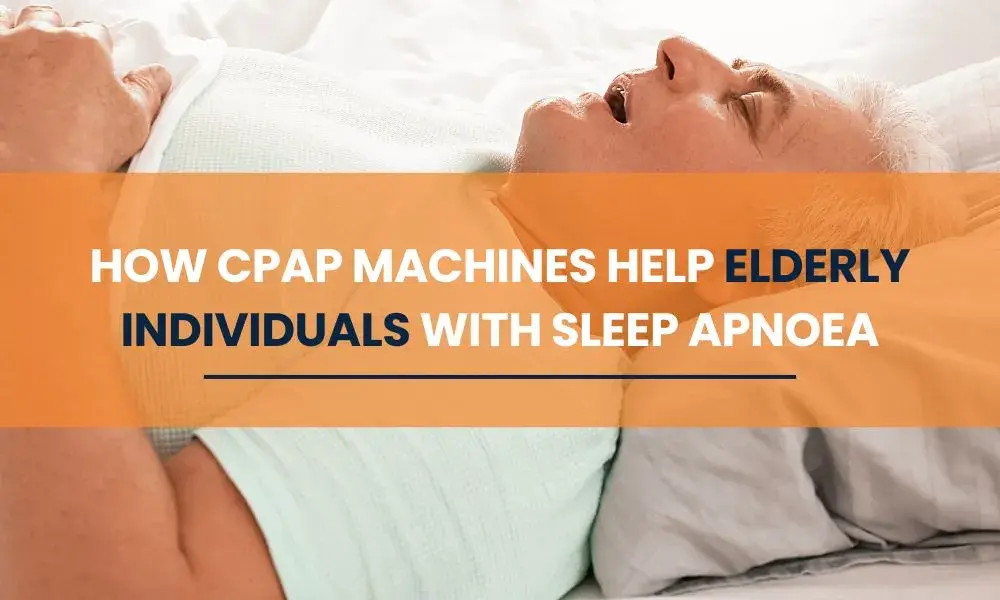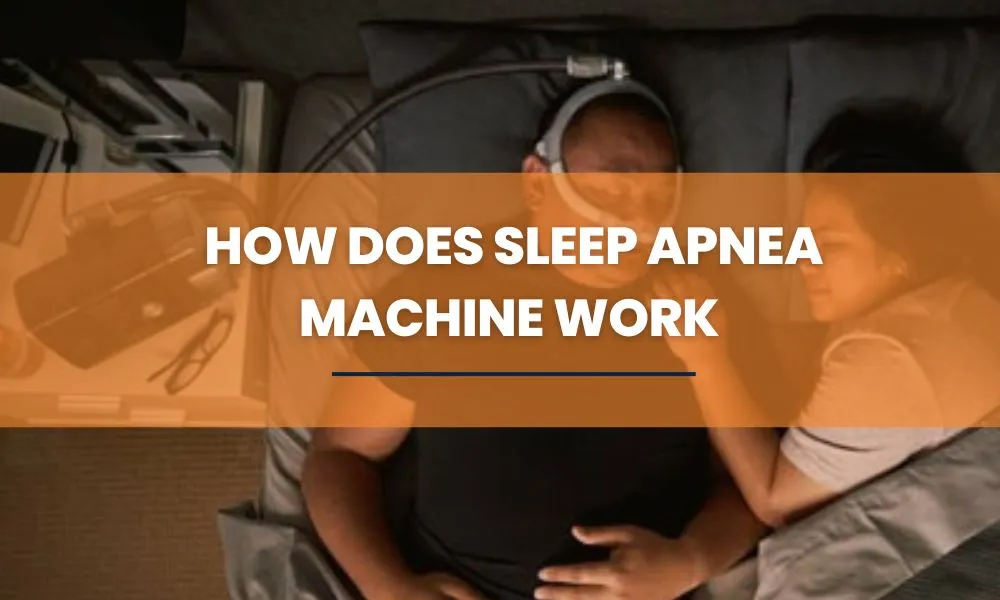
Sleep apnea is a common sleep disorder that affects many individuals, causing pauses in breathing or shallow breaths during sleep. These interruptions can occur repeatedly and lead to poor sleep quality, excessive daytime sleepiness, as well as an increased risk of heart-related problems that may impact overall health and well-being.
Continuous positive airway pressure, or CPAP, machines are typically used to treat sleep apnea by providing a constant flow of air to ensure the airway remains open during sleep. As you dive deeper into the world of sleep apnea and its treatment options, our team at Rockingham CPAP is dedicated to offering guidance and support for individuals seeking relief from their sleep apnea symptoms.
Understanding Sleep Apnea
Sleep apnea is a sleep disorder characterised by an involuntary cessation of breathing that occurs while the patient is asleep. During this interruption, the oxygen level in the blood drops and forces the brain to wake the body to resume breathing, leading to disruptive sleep cycles. It’s an agonising condition that can rob its sufferers of restful sleep and lead to serious health complications if left untreated.
The two primary types of sleep apnea are Obstructive Sleep Apnea (OSA) and Central Sleep Apnea (CSA).
- Obstructive Sleep Apnea is more common and occurs when the throat muscles relax and block the airway during sleep. This type blocks the flow of air, causing a struggle to breathe and often resulting in loud snoring.
- Central Sleep Apnea, on the other hand, is less common and involves the brain failing to send the necessary signals to your muscles to breathe. This type results from instability in the respiratory control centre in your brain.
In Australia, sleep apnea is a pervasive issue. The BetterHealth Channel estimates that roughly 5% of adults have moderate to severe sleep apnea. Sleep apnea brings several health risks, such as hypertension, heart disease, stroke, type 2 diabetes, depression, and accidents due to daytime sleepiness. It’s easy to see why understanding and addressing sleep apnea remains a vital concern for health professionals across the country.
The Role of Sleep Apnea Machines
When it comes to managing sleep apnea, various machines play integral roles in the treatment process. The most commonly used are Continuous Positive Airway Pressure (CPAP) machines, Bilevel Positive Airway Pressure (BiPAP) machines, and Automatic Positive Airway Pressure (APAP) machines.
The primary purpose of these machines is to ensure the consistent flow of air so that the airway remains open throughout the sleep cycle. This constant flow of air helps to prevent the pauses in breathing characteristic of sleep apnea, allowing sufferers to achieve a full, uninterrupted night’s sleep.
While each of these machines aims to improve respiration and enhance sleep quality, they differ in how they deliver air and the level of pressure they provide:
- CPAP machines deliver a continuous and consistent level of air pressure throughout the night. They are typically used for individuals with Obstructive Sleep Apnea.
- BiPAP machines, on the other hand, provide two levels of pressure – a higher pressure during inhalation and a lower pressure during exhalation, making it easier for users to breathe out. BiPAP machines are suitable for individuals who have difficulty with the constant pressure of a CPAP machine.
- APAP machines automatically adjust the pressure on a breath-by-breath basis to deliver the minimal pressure needed to keep the airway open, providing tailored treatment for individuals with varying pressure needs throughout the night.
Understanding the divergence in their function will help in identifying the most suitable machine based on an individual’s distinct requirements.
Continuous Positive Airway Pressure (CPAP)
CPAP therapy is a common treatment for sleep apnea, particularly Obstructive Sleep Apnea (OSA). It works by providing a steady stream of pressurised air into the patient’s airway to keep it open and prevent it from collapsing, which can lead to apnea events.
A CPAP machine is composed of three major components:
- Airflow Generator: The airflow generator is the heart of the CPAP machine. It draws in air from the room, pressurises it to a level set by your doctor, and delivers it to you.
- Mask: The mask can either cover the nose or both the nose and mouth and is where the pressurised air is delivered to the user’s airway. Masks come in various sizes and styles to ensure a comfortable fit for different face shapes.
- Tubing: This is the conduit connecting the airflow generator to the mask. It carries the pressurised air from the machine to the mask.
CPAP therapy maintains airway patency by providing a continuous column of air that acts as a ‘pneumatic splint’ for the airway. This prevents the soft tissues in the throat from collapsing during sleep, which can obstruct the airway and interrupt breathing.
Benefits of CPAP therapy include:
- Improved Sleep Quality: By eliminating sleep disruptions caused by pauses in breathing, CPAP therapy allows for a more restful and uninterrupted sleep.
- Reduced Daytime Fatigue: Improved sleep results in more daytime alertness and vitality, reducing the problems of persistent tiredness and daytime sleepiness that many sleep apnea sufferers experience.
- Better Cardiovascular Health: Persistent sleep apnea can lead to increased blood pressure and strain on the heart. By treating sleep apnea, CPAP therapy can significantly lower the risk of heart diseases such as high blood pressure, heart failure, and stroke.
- Improved Concentration: CPAP therapy can lead to better cognitive function by eliminating sleep interruptions, thereby improving memory, concentration, and productivity.
- Reduced Morning Headaches: Often, sleep apnea sufferers experience morning headaches due to overnight oxygen deprivation. CPAP therapy can reduce or eliminate these headaches by maintaining optimal oxygen levels.
- Improved Mood: By ensuring better sleep, CPAP treatment can lead to improved mood and well-being, reducing irritability and depression often associated with sleep apnea.
While CPAP is highly effective and commonly used, it’s important to note that it may not be the best solution for everyone. Some users may find the mask uncomfortable to wear, and some might experience minor side effects such as dry mouth or nasal congestion. Regular cleaning of the equipment is essential to prevent infections. Despite these limitations, for many, the benefits of CPAP therapy far outweigh the potential downsides.
Bilevel Positive Airway Pressure (BiPAP)
Bilevel Positive Airway Pressure therapy, or BiPAP therapy, is another widely used treatment for sleep apnea, particularly for people who can’t accommodate CPAP therapy. The fundamental difference between BiPAP and CPAP lies in the delivery of air pressure: unlike CPAP which applies a constant stream of air pressure, BiPAP machines provide two different levels of pressure – a higher pressure during inhalation and a lower pressure during exhalation.
This dual pressure function makes breathing easier, particularly for users who have difficulty exhaling against the steady pressure of a CPAP machine. Beyond sleep apnea, BiPAP therapy is also often utilised for conditions like congestive heart failure, lung disorders, or neurological diseases where more intensive respiratory support is needed.
Advantages of BiPAP therapy include:
Easier Exhalation: Providing a lower pressure during exhalation makes it easier to breathe out, making the treatment process more comfortable.
- Greater Comfort: The alternating pressure levels generally make BiPAP machines more comfortable for users than single-pressure CPAP machines, leading to higher treatment adherence.
- Improved Oxygen Levels: BiPAP therapy can be especially advantageous for individuals with certain conditions such as Chronic Obstructive Pulmonary Disease (COPD) or Congestive Heart Failure (CHF) where better ventilation can be beneficial.
- Reduced Work of Breathing: As BiPAP machines aid with inhalation and breathing out, they can help reduce the work of breathing, especially in individuals with certain lung conditions.
- Advanced Features: BiPAP machines often come with more advanced features, such as built-in humidifiers, for increased comfort during use.
However, like all therapies, BiPAP also has its limitations. Some users may find it difficult to adjust to two pressure levels, and the machines can be more expensive. Besides, BiPAP therapy requires careful settings adjustment for optimal effectiveness, making it essential to consult with a healthcare professional regarding its proper use.
Auto-Adjusting Positive Airway Pressure (APAP)
APAP, or AutoPAP, therapy is a form of treatment for sleep apnea featuring technologically advanced machines which automatically adjust the amount of pressure delivered on a breath-by-breath basis to provide the minimal pressure needed to maintain an unobstructed airway.
The mechanism of an APAP machine is distinctive in that it utilises internal algorithms and sensors. By monitoring factors like the user’s breathing rate, airflow, and whether apneas are detected, the machine dynamically changes the pressure delivered depending on the patient’s needs at any given time during sleep. While they have set maximum and minimum pressure limits, the pressure automatically rises when the user has difficulty breathing and reduces when the user is breathing normally.
APAP therapy stands out due to its adaptability and customization. The variability of pressure settings serves to accommodate the various factors that can influence a person’s apnea events, such as changes in sleep position, varying stages of sleep, and the influence of alcohol or sedative use.
Benefits of using APAP machines include:
- Personalised Pressure Adjustments: APAP machines deliver pressure based on the patient’s real-time needs, leading to higher comfort levels and improved compliance with treatment.
- Adaptability to Changes in Breathing Patterns: The self-adjusting mechanism allows the machine to respond to changes that can affect the person’s breathing during sleep. These changes might include different sleep stages, sleeping positions, or the effects of alcohol or medication.
- Versatility: APAP machines can generally be set to work as a standard CPAP machine, making it a more versatile choice offering the benefit of two machines in one.
- Improved Comfort: The ability to provide lower overall pressure, when possible, can lead to improved comfort during treatment.
- Possible Improved Efficacy: Some studies suggest that using an APAP machine might lead to better overall reductions of apnea episodes, particularly for complex or varying sleep apnea.
While APAP machines have these benefits, they might not be suitable for every patient and certain complex forms of sleep apnea. It’s also crucial to note that they are usually more expensive than CPAP machines due to their advanced features. As always, discussing all types of treatment with a healthcare provider is the best course of action when deciding on therapy.
Choosing the Right Sleep Apnea Machine
Choosing the ideal sleep apnea machine is crucial for effective sleep apnea management. The right device should cater to your specific needs and comfort.
Here’s a guideline on the factors you should consider while making your selection:
1. Prescription
The first factor to consider before purchasing an apnea machine should be your medical prescription. A sleep specialist or healthcare provider prescribes the type of machine best suited for your condition based on your sleep study results. They will specify the kind of machine (CPAP, BiPAP, or APAP) and often the pressure settings.
2. Machine Type
Different types of machines are designed to address different needs. If you find it hard to exhale against continuous pressure, a BiPAP machine with dual pressure settings may be more comfortable. If your condition varies night by night, an APAP machine that adjusts the pressure levels automatically could be most beneficial.
3. Mask Fit
Mask comfort is significant in determining your device usage. Full-face masks, nasal masks, and nasal pillow masks offer different fits and have their pros and cons. Try different styles to find which type offers the best seal, comfort, and doesn’t interfere with your sleep.
4. Noise Level
Most modern sleep apnea machines are fairly quiet. However, some may still produce a degree of noise that’s bothersome for light sleepers. Check the decibel level of a machine before purchase if you or your bed partner have a sensitivity to sound.
5. Size and Portability
If you travel often, a compact and lightweight machine will be a viable option. Some brands offer travel-sized CPAP machines designed for convenience on the go.
6. Budget
Prices can vary widely depending on the type of machine and features. While making your selection, balance between your budget and the features that are most important to you.
Consult with a Sleep Specialist or Healthcare Provider
Before purchasing a machine, always consult with your healthcare provider or a sleep specialist. They can guide you based on your specific symptoms, lifestyle, and comfort preferences, and ensure that the machine you choose will optimally treat your sleep apnea.
Choosing the right sleep apnea machine can significantly enhance your quality of life. While it may seem challenging to pick one, understanding your unique needs, consulting with professionals, and considering essential factors will guide you to select the most suitable machine for you.
Take the First Step Towards Better Sleep with Rockingham CPAP!
Are you tired of tossing and turning, dealing with endless nights of interrupted sleep? It’s time to reclaim your restful nights and energetic days!
At Rockingham CPAP, we believe in customising every patient’s treatment because we understand that everyone is unique and so should their treatment be!
With an extensive range of machines, masks, and accessories, we are dedicated to providing personalised and solution-focused support for your sleep therapy. We understand that each individual’s needs are unique, and that’s why we guide you through every step of your journey to better sleep, from selection to ongoing support.
The answer to your sleep struggles is just one decision away. Take control of your sleep apnea and take back your life! Choose Rockingham CPAP – your partner in effective sleep apnea management.
Get in touch with us today for a comprehensive consultation.

